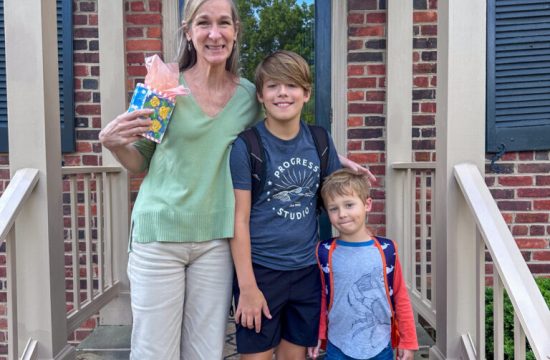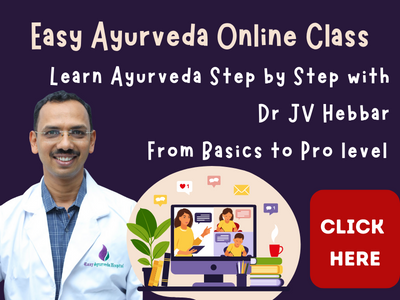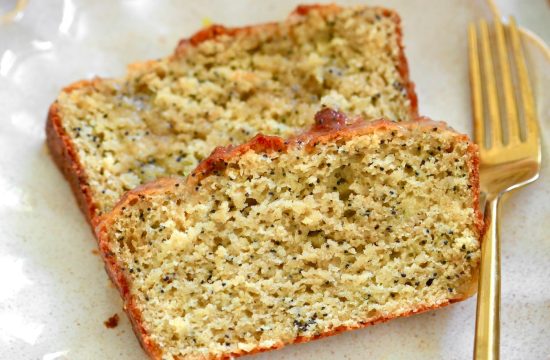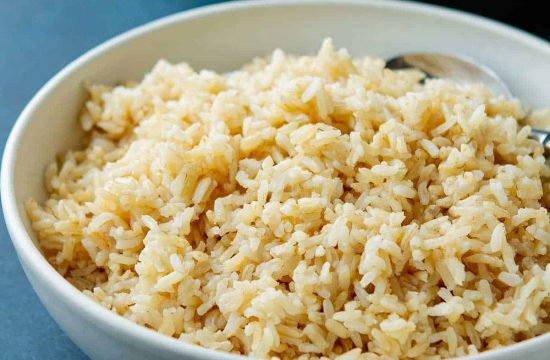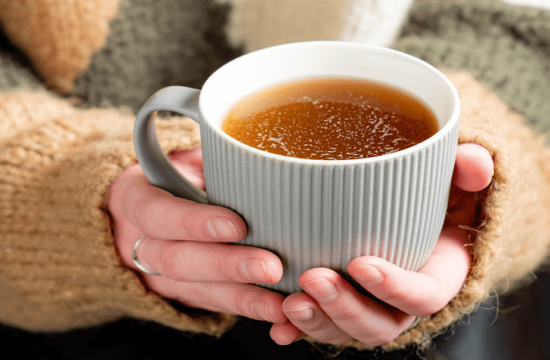Article by Dr Raghuram Y.S. MD (Ay) & Dr Manasa, B.A.M.S
Torticollis, also known as wryneck is a painful condition of the neck marked by painfully twisted neck. In this condition the neck is twisted. This further causes the head to rotate and tilt at an odd angle. The top of the head is generally tilted to one side while the chin is tilted towards the other side.
Generalized Symptoms of Torticollis
Symptoms often begin slowly but would worsen over time, as the disease progresses. Different symptoms may be experienced by different people. The most common symptoms of torticollis include –
– inability to move the head normally
– inability to turn the head, usually holding it twisted to one side
– pain in neck and muscles therein
– neck stiffness
– spasm of neck muscles
– pain along the spine
– swelling of neck muscles
– headache
– chin tilted to one side / awkward position of the chin
– one shoulder is higher than the other
Related Reading – Torticollis
Ayurveda understanding of Torticollis
Vata disorder
Pain, stiffness, inability to move or turn the head, spasm, mal-positioning of shoulder and chin and associated headache – all these symptoms in torticollis point out towards involvement of aggravated vata in causation and worsening of torticollis over a period of time. Torticollis is clearly a vata disorder. Manyastambha and Grivastambha explained in the context of vata nanatmaja rogas include the explanation of torticollis.
Manyastambha
Manya, in Sanskrit means ‘back of the neck’ Stambha means stiffness. The meaning of the word stambha shall not be limited to ‘only stiffness’. It also includes the other symptoms coexisting with stiffness or caused by it, like pain and limitation of movements. We do not find a detailed description of Manyastambha.
Manyastambha has been explained in the context of ‘vata nanatmaja vyadhi’ i.e. eighty specific conditions caused by ‘aggravation of only vata’. But we can also see a kapha component in Manyastambha. So, it is predominantly a vata disorder, with kapha association in some conditions.
Torticollis can be closely correlated to manyastambha.
Kapha involvement in Torticollis, Kaphavruta Vata
Stambha, which translates to stiffness or catch or rigidity (limiting the movements) is a symptom attributed to kapha, though vata too can cause stambha. Master Sushruta has specifically mentioned kapha along with vata in the pathogenesis of manyastambha.
Since the aggravated kapha blocks the vata and interferes in its normal functioning, torticollis can also be considered as kaphavruta vata condition.
Understanding Torticollis from the perspective of causative factors, Greeva Hundanam
Among the causes of acquired torticollis sleeping in awkward or weird position has been mentioned.
The other causes of acquired torticollis like spasm or injury of neck muscles, injury, vigorous movement and injury resulting in muscle shrinkage will cause aggravation of only vata. In this case they may cause greeva hundana which is alike torticollis. The causes of secondary torticollis like slipped facets or disc herniation will also cause aggravation of vata leading to greeva hundana.
Injury to muscle or nervous system will cause torticollis. This too might occur due to vata aggravation following injury and cause greeva hundana.
Related Reading – Hundanam
Understanding Torticollis from ‘types of torticollis’ perspective
Fixed and muscular torticollis can be considered in the category of asthi and mamsagata vata.
Congenital torticollis as in Klippel Feil Syndrome may be considered as the affliction of muscles and bones of the fetus by aggravated vata. Vata is responsible for differentiation of body parts. The fusion of neck vertebrae may occur due to failure of this function of vata.
Spasmodic contractions of neck muscles are also caused by vata aggravation. When vata gets aggravated spasmodic contractions can occur anywhere in the body. Same is the case with tilt of the head. Abnormal twists, turns and tilts in the body parts are caused by aggravated vata.
Among the types of torticollis on the basis of position of head and neck – laterocollis, rotational torticollis, anterocollis and retrocollis – all are caused by aggravated vata.
Understanding Torticollis from ‘symptoms and complications of torticollis’ perspective
1. Symptoms and dosha relation in torticollis
| Sl No | Symptom of torticollis | Dosha relation with the symptom |
| 1 | Inability to move the head normally or turn the head, usually holding it twisted to one side | Vata |
| 2 | Neck pain / pain in neck muscles | Vata |
| 3 | Neck stiffness / spasm of neck muscles | Kapha, vata, kaphavrita vata |
| 4 | Pain down the spine | Vata |
| 5 | Headache | Vata |
| 6 | Swelling of neck muscles | Kapha, vata, kaphavrita vata |
| 7 | Chin tilted to one side / awkward position of the chin | Vata, kaphavrita vata |
| 8 | One shoulder higher than the other | Vata |
| 9 | Delayed motor skills in children | Vata |
| 10 | Difficulties with vision and hearing in children | Vata |
2. Dosha association in other symptoms of torticollis
| Sl No | Symptom of torticollis | Dosha association |
| 1 | Neck pain | Vata |
| 2 | Mass formation | Kaphavrita Vata |
| 3 | Thickening or tightness of sternocleidomastoid muscle | Kapha-Vata, Kaphavrita Vata |
| 4 | Cervical spine tenderness | Vata |
| 5 | Tremor in the head | Vata |
| 6 | Decreased neck movement | Kaphavrita Vata |
| 7 | Unusual shoulder heights | Vata |
3. Dosha association with complications of torticollis
| Sl No | Complication of torticollis | Dosha Relation |
| 1 | Swelling of neck muscles | Vata, Vata-Kapha, Kaphavrita Vata |
| 2 | Chronic pain | Vata |
| 3 | Compressed nerves | Vata |
| 4 | Neurological symptoms | Vata |
| 5 | Depression | Vata |
| 6 | Difficulty in socializing | Vata, Kapha |
| 7 | Isolation | Kapha, Vata |
| 8 | Inability to drive | Kapha-Vata, Kaphavrita Vata |
Stiff Neck, Greeva Hundanam
It is a self-limiting form of torticollis which occurs spontaneously and includes one or more painful neck muscles. This condition will spontaneously go away in about 1-4 weeks’ time. The muscles which are generally involved in this condition are trapezius or sternocleidomastoid. In many cases no specific or clear causes are found but in some conditions colds or unusual postures are contributory. This condition can also be correlated with the explanation of Greeva hundanam.
Spasmodic Torticollis, Greeva Hundanam
It is a condition in which there is recurrent and transient contraction of neck muscles, mainly sternocleidomastoid muscle. It is also called by the below mentioned names –
– Intermittent torticollis
– Cervical dystonia
– Idiopathic cervical dystonia
This condition can also correlate with the description of greeva hundanam.
Ayurveda Treatment of Torticollis
Treatment principles
Nidana Parivarjana – One shall avoid / keep away the causative factors as the first and foremost part of intervention. Mainly excessive day sleep, sleeping on uneven surface (odd, untoward position) and excessive looking in upward gaze shall be avoided as much as possible.
Vata Vyadhi Chikitsa – Since Manyastambha often compared with torticollis is one of the vata vyadhis, a general line of treatment of vata vyadhi has to be adopted in treating torticollis.
– When only vata is involved – interventions like abhyanga – oil massage, lepa – anointment of medicinal pastes, pichu – keeping a gauze or swab dipped in vata alleviating oil over the posterior part of the neck, swedana – sudation, mainly nadi sweda or pinda sweda, nasya – errhines and vasti – medicated enemas are extremely helpful.
– When kapha is associated – ruksha sweda – dry sudation / fomentation, mrudu vamana – mild emesis, nasya – errhines and lepa will be helpful.
It is important to identify the dosha involvement and association in this condition so as to provide good results.
Greeva Basti – oil pooling therapies done on the back of the neck is extremely helpful in relieving the symptoms of torticollis. It can be skillfully combined with nasya and churna or patra pinda sweda for better results.
Beneficial formulations
For Abhyanga and Greeva Basti – Mahanarayana Taila, Ksheerabala Taila, Prasarinyadi Taila and Mahamasha Taila / Kottamchukkadi Tailam (kapha involvement)
For Nasya – Ksheerabala Taila 101 and Mahamasha Taila for vata predominant conditions / Anu taila for kapha predominant condition
For Vasti – Ksheerabala Taila, Mahamasha Taila, Guggulutiktaka Ghrta
For oral use –
– Prasarinyadi Kashayam
– Maharasnadi Kashayam
– Varanadi Kashayam
– Rasonadi Kashayam
– Dashamula Kashayam
– Mahayogaraja Guggulu
– Rasnadi Guggulu
– Ashwagandharishta
– Balarishta
– Mahavata Vidhwamsini Ras
Beneficial Yoga Postures
– Ushtrasana – Camel Pose
– Shavasana – Corpse Pose
– Navasana – Boat Pose
– Uttana Shishosana – Extended Puppy Pose
– Balasana – Child’s Pose
– Vashishthasana – Side Plank Pose
– Setu Bandhasana / Setu Bandha Sarvangasana – Bridge Pose
– Utthitha Trikonasana – Extended Triangle Pose
– Adho Mukha Shvanasana – Downward Facing Dog Pose
– Paschimottanasana – Seated Forward Bend Pose
– Uttanasana – Standing Forward Bend Pose
– Virabhadrasana II – Warrior II Pose
– Urdhwa Mukha Pasasana – Thread the Needle Pose
– Viparita Karani – Legs up the wall Pose
– Gomukhasana – Cow Face Pose
– Ardha Matsyendrasana – Half Lord of the Fishes Pose
– Dwi Pada Viparita Dandasana – Two Footed Pose
– Chakravakasana / Marjaryasana / Bitalasana – Cat / Cow Stretch Pose
– Anahataasana – Melting Heart Pose
– Salamba Bhujangasana – Sphinx Pose







